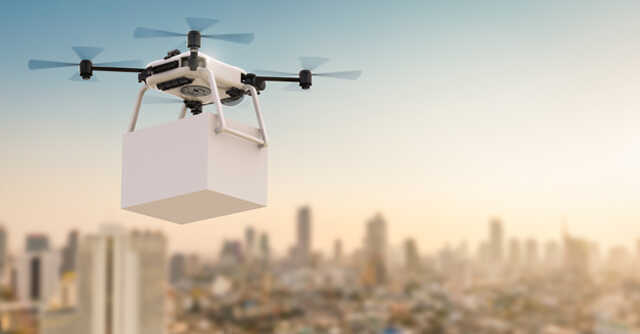
Drone firms turn to 3D printers to support manufacturing needs


India’s push to manufacture drones and drone parts within its borders could be a boon for 3D printing firms in the country. The country’s drone industry, though nascent, sees a big scope in providing drones-as-a-service for agriculture, delivery, healthcare etc. But for that, drone makers have to ramp up production, which is difficult since the industry has little infra presence in India right now.
As a result, drone makers are turning to 3D printing firms in order to use the technology to build parts. The two industries are playing a complimentary role for each other, each helping spur the other’s growth.
While the use of 3D printing in the drone industry itself is not new, its usage was limited so far, said experts. That has changed with advancements in 3D printing technology, which now offers better quality material and more durable 3D printed products.

“Demand for hybrid 3D printing machines has grown significantly in the drone industry in India. Requirements for materials like polyurethane, which is a rubber-like material used in making landing gear, have gone up. Carbon fiber-based materials are also being increasingly used in small drones,” said Swapnil Sansare, vice president of Indian Additive Manufacturing Forum and chief executive of Divide by Zero, a 3D printing firm.
Experts like Sansare said that 3D printing is being used for both prototyping and to build parts that will be used in end products, unlike most sectors where the technology is predominantly used for prototyping.
With 3D printing, it is possible to customize drones as per use case. Parts like the drone’s frame, landing gear, propellers, camera mount, antenna holder, and protective equipment, like prop guards are all standard and can be 3D printed in a way that makes them light, and customizable in terms of size. In addition, specialized use cases like smart-farming may need specialized equipment like sprayers, pumps, tanks, etc, which can be 3D printed too.

“Companies are continuously innovating in the drone segment. There are new demands and expectations. 3D printing service providers are better positioned to understand and deliver them,” said Vipul Singh, co-founder, and chief executive of Aarav Unmanned Systems (AUS), a drone service provider.
Singh explained that certain shapes and parts are difficult to produce at a large scale using conventional manufacturing. “Also the possibility to develop alloys in 3D printing has also increased. This allows greater flexibility with the design,” he added.
Homegrown 3D printing company Imaginarium, which provides 3D printed components to some large drone companies, is expected to inaugurate a metal printing facility in August. Such facilities use powdered metals to print layers of metallic objects, making sturdier finished products.

“It allows the same design freedom and you can print in aluminum and titanium, which are lightweight metals and have high strength to weight ratio,” said Priyesh Mehta, director, of Imaginarium. He added that one of the key challenges 3D printing has over conventional manufacturing is in creating light weight designs.
Further, conventional manufacturing also hinges on the size of the order. Most manufacturers don’t entertain small orders and most drone makers don’t have large volume needs at least right now.
Mehta pointed out that barring a few companies in the drone industry that do mass production, most are at a pre-concept stage and their designs are changing so fast that it doesn't make sense for them to go for mass production right now. “They are using 3D printing as a bridge as there is no minimum order quantity (MOQ) for 3D printing,” he said.

But while we are yet to find out whether the 3D printing industry becomes a long term solution for the drone industry, players in the additive manufacturing (another name for 3D printing) space have a big opportunity.
For instance, Imaginarium has applied for the Rs. 120 crore drone PLI scheme the government announced in 2021. India also banned imported drones in February this year, pushing more firms towards these 3D printers, and while most parts are still imported, Mehta said the industry can reverse engineer those parts using 3D scanning, to create computer-aided design (CAD) models, which can then be used for manufacturing on-demand.
In fact, the ability to design and build on-demand is one of the factors that has helped form the synergy between the drone and 3D printing industries. “Being a small startup in a budding industry, you don't have a regular demand you generally build to order. Your batches will be smaller. You will build 50 to 100 drones. Smaller companies even do 5 to 10 drones,” said AUS’ Singh. Which means that inventory costs can be kept in check.

That said, industry watchers also noted that the synergy is temporary. Once the drone industry achieves the scale it needs to, it will have to turn to traditional large-scale manufacturing, which will then be more cost-effective. Mughilan Thiru, co-founder and chief executive of Skylark Drones, estimated that 15-20% of drone components are 3D printed in India right now.
“The moment things in the drone industry become more standardized, drone companies will switch to injection moulding (a manufacturing process where parts are produced by injecting molten materials into a mould) as that will be a cheaper option,” he added.
